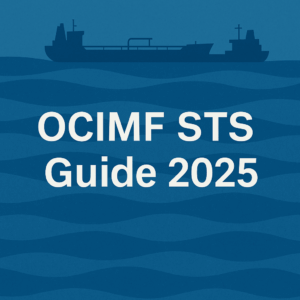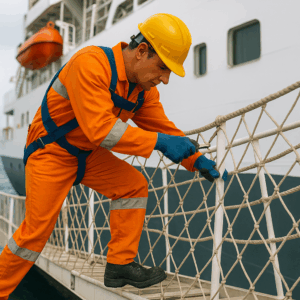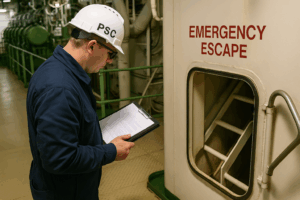The long-awaited second edition of the CDI/ICS/OCIMF/SIGTTO Ship-to-Ship (STS) Transfer Guide, published in 2025, marks the most significant update in over a decade. Building on 50 years of industry experience, the new guide provides comprehensive, practical and regulatory-aligned direction for safe and efficient STS operations across oil, chemical, LPG and LNG cargoes.
What’s New in the 2025 Edition?
The 2025 Guide introduces several key developments:
- Human Factors Focus – a dedicated chapter on human performance, decision-making, crew fatigue, and communication, recognising that technical procedures alone are not enough.
- Emerging Technologies – evaluation and integration of innovative solutions, such as digital monitoring tools, fender performance sensors, and new risk management systems.
- Updated Personnel Transfer Protocols – alignment with OCIMF’s Transfer of Personnel by Crane Between Vessels, applying a risk-based approach to PTB and pilot ladder transfers.
- Enhanced Equipment Guidance – state-of-the-art recommendations on fender sizing, cargo and vapour hoses, and mooring arrangements, reflecting current best practices.
- Integrated Cargo Guidance – consolidated operations procedures for Oil, Chemicals, LPG, and LNG directly into the main text, streamlining what used to be separate appendices.
- Revised Safety Checklists – fully aligned with ISGOTT v.6, covering six distinct phases of STS operations, ensuring procedural integrity step by step.
- Terminology Update – replacing “Mother Ship” and “Daughter Ship” with Constant Heading Ship (CHS) and Manoeuvring Ship (MS), for clearer communication and reduced ambiguity.
Why This Matters
For oil majors, shipowners, and technical operators, the new guide sets the benchmark for compliance and operational assurance. It reinforces alignment with MARPOL Annex I, Port State requirements, and international best practices. Most importantly, it provides a clear standard for vetting inspections and client audits, making strict adherence non-negotiable for STS Service Providers.
How Marine Can Support You
At Marine Surveyor Consultant / Offshore Fenders Ltd, we ensure that our clients and partners remain fully aligned with these new requirements:
- Updated STS Plans – revised and fully compliant with OCIMF 2025, integrating risk assessments, Just Culture, and Zero Incident commitments.
- Checklists & JPOs – operational tools reformulated to mirror the six new OCIMF checklists, ready for onboard use.
- Training & Tabletop Exercises – incorporating human factors, drills, and scenario simulations in cooperation with Flag and Port Authorities.
- Equipment Assurance – systematic inspection and certification of fenders, hoses, and mooring equipment, aligned with the new sizing and handling protocols.
- Vetting Readiness – consultancy and auditing services to prepare operators for Oil Major inspections and PSC checks under the new framework.
Conclusion
The OCIMF STS Guide 2025 is more than a regulatory update – it represents a cultural shift towards integrating technology, human performance, and proactive risk management into every STS transfer. Operators that act now to align their systems will not only ensure compliance but also demonstrate leadership in safety and environmental stewardship.
At Marine, we stand ready to help shipowners, oil majors, and charterers navigate these changes, ensuring that every STS operation is conducted safely, efficiently, and with zero incidents.






